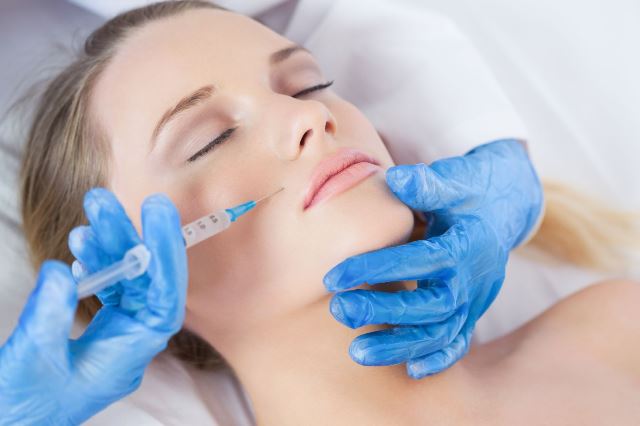
Platelet rich plasma (PRP) therapy administered by injection
Platelet rich plasma (PRP) therapy is a beauty treatment that has received a lot of attention recently in the media and has been colloquially termed the ‘vampire facial’. The process involves around 30-60mL of the client’s blood being extracted, processed and then the blood plasma containing the platelets is reinjected into the client’s skin (normally the face), hence the ‘vampire facial’ moniker. PRP therapy may be an alternative to methods that can be considered more invasive, including surgery. PRP therapy may also be called the plasma facial, plasma needling, PRP lift or collagen induction therapy.
PRP use as a beauty therapy
PRP therapy has gained popularity in anti-ageing treatments for damaged, wrinkled or sagging skin, to stimulate collagen production and to decrease fine lines. Areas of the body that are typically recommended for this type of therapy include the jaw, neck, hands, décolletage and the face, particularly around the eyes. Clients are advised that whilst the therapy improves both the tone and texture of the skin, the effects of the therapy are progressive and not immediate. For ongoing effects, beauty therapists typically recommend monthly treatments over a three to four month period.
Description of PRP therapy
The client will have blood drawn, typically from their arm. The client’s blood will then be centrifuged, during which the plasma and platelets will be separated from the other components of the blood. The platelet rich plasma is then reintroduced to the client’s skin, either through microneedling or injection via syringe. Microneedling is promoted as a twofold therapy with the needling acting as a catalyst for the skin to resurface, whilst PRP introduces collagen and elastin to stimulate cell growth.
Potential side effects
It is possible to experience some or all of the following skin-related side effects up to a week after the therapy:
- bruising
- burning
- intense itching
- swelling
- dryness
- puffiness
- redness.
Effects such as mild nausea, fainting and dizziness are also possible. Side effects from the injection can include infection, nerve injuries, pain and tissue damage.
Requirements of PRP therapy
The following should be adhered to by therapists administering PRP therapy:
- The premises should have a documented procedure in place for sample collection, client preparation, specimen acquisition (including correct fill volume) and sample handling.
- Needles and syringes must be sterile, single-use and disposed of in a sharps container which complies with AS 4031.
- Sample manipulation should occur in the room with the client to reduce the risk of the wrong sample being used. If this is not possible, a unique identification system must be used to match the client with the sample at all times.
- Cleansing, disinfection and sterilisation requirements must be in line with the WA Code of Practice for Skin Penetration Procedures 1998 (Code of Practice).
- Any unused blood/manipulated sample contents must be disposed immediately post-procedure as clinical waste.
For any further information regarding skin penetration practices and procedures, please refer to the Code of Practice.
More information
Environmental Health Directorate
Last reviewed: 23-01-2020